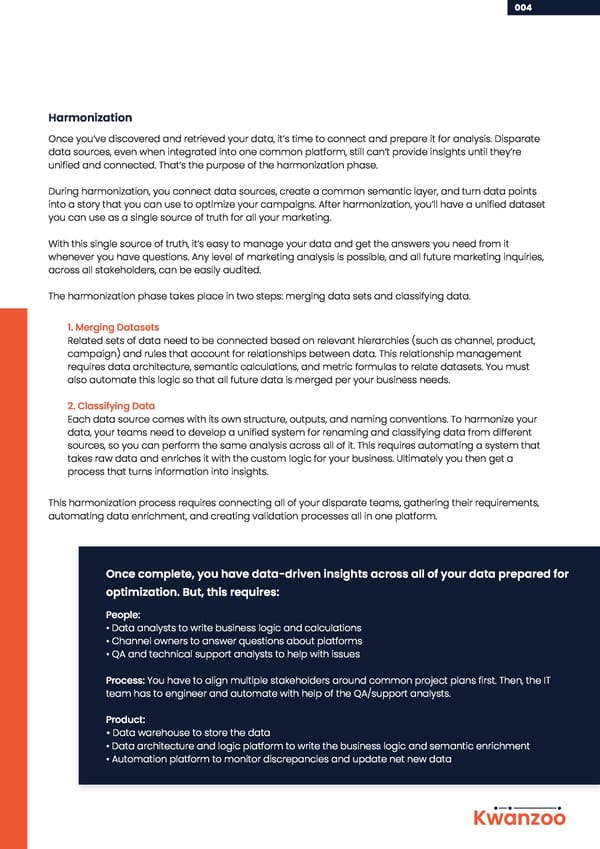004 Harmonization Once you’ve discovered and retrieved your data, it’s time to connect and prepare it for analysis. Disparate data sources, even when integrated into one common platform, still can’t provide insights until they’re unified and connected. That’s the purpose of the harmonization phase. During harmonization, you connect data sources, create a common semantic layer, and turn data points into a story that you can use to optimize your campaigns. After harmonization, you’ll have a unified dataset you can use as a single source of truth for all your marketing. With this single source of truth, it’s easy to manage your data and get the answers you need from it whenever you have questions. Any level of marketing analysis is possible, and all future marketing inquiries, across all stakeholders, can be easily audited. The harmonization phase takes place in two steps: merging data sets and classifying data. 1. Merging Datasets Related sets of data need to be connected based on relevant hierarchies (such as channel, product, campaign) and rules that account for relationships between data. This relationship management requires data architecture, semantic calculations, and metric formulas to relate datasets. You must also automate this logic so that all future data is merged per your business needs. 2. Classifying Data Each data source comes with its own structure, outputs, and naming conventions. To harmonize your data, your teams need to develop a unified system for renaming and classifying data from different sources, so you can perform the same analysis across all of it. This requires automating a system that takes raw data and enriches it with the custom logic for your business. Ultimately you then get a process that turns information into insights. This harmonization process requires connecting all of your disparate teams, gathering their requirements, automating data enrichment, and creating validation processes all in one platform. Once complete, you have data-driven insights across all of your data prepared for optimization. But, this requires: People: • Data analysts to write business logic and calculations • Channel owners to answer questions about platforms • QA and technical support analysts to help with issues Process: You have to align multiple stakeholders around common project plans first. Then, the IT team has to engineer and automate with help of the QA/support analysts. Product: • Data warehouse to store the data • Data architecture and logic platform to write the business logic and semantic enrichment • Automation platform to monitor discrepancies and update net new data Kwanzoo
 3. Go-to-Market Data Integration Playbook Page 4 Page 6
3. Go-to-Market Data Integration Playbook Page 4 Page 6